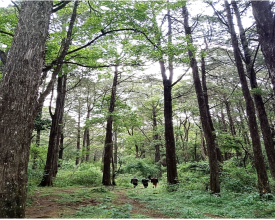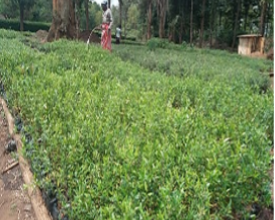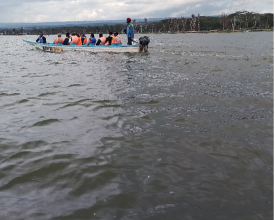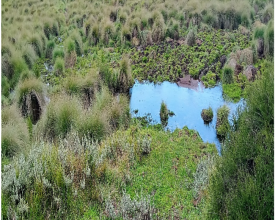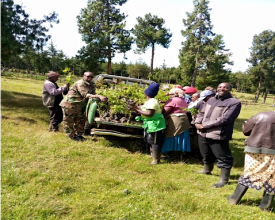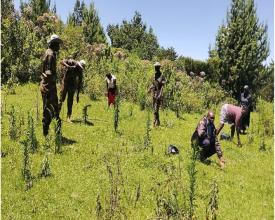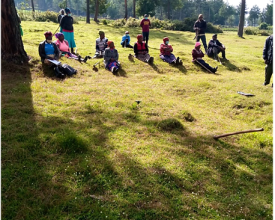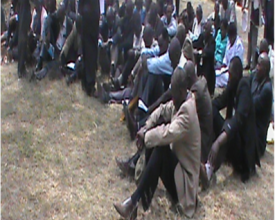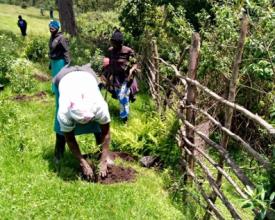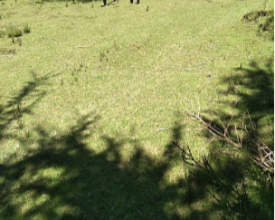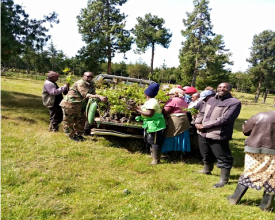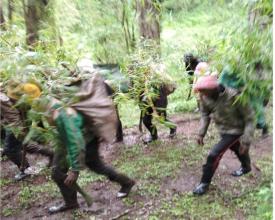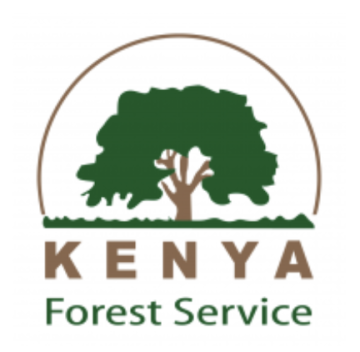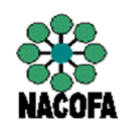
Empowering Communities to Protect and Manage the Lake Naivasha Catchment in Kenya's Aberdare Forest
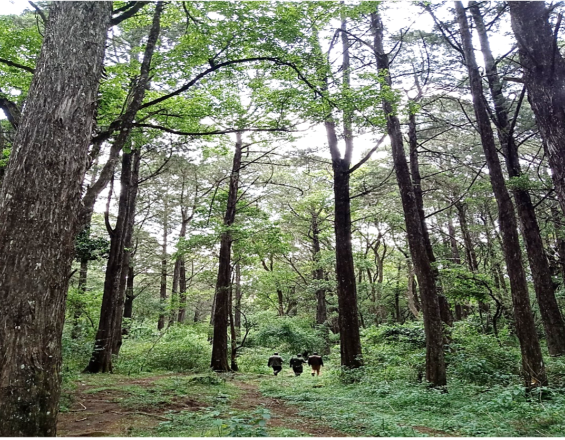
The solution addresses the degradation of Lake Naivasha by focusing on sustainable land management and community-driven conservation. It combines forest conservation with community livelihood support, contracting Community Forest Associations (CFA) members to raise seedlings, which were paid for by National Alliance of Community Forest Associations)(NACOFA) after being planted on degraded sites. The Kenya Forest Service allowed community members to cultivate food crops alongside the young seedlings, boosting food supply, creating jobs, and protecting the seedlings. Stakeholder mapping and strong partnerships ensured cohesive efforts, while developing governance structures empowered local leaders to manage restoration. The project’s success demonstrates that conservation initiatives aligned with community livelihoods achieve higher success rates, offering a scalable model for ecosystem restoration.
Context
Challenges addressed
Kenya, rich in natural resources and cultural heritage, faces environmental challenges like deforestation, land degradation, drought, landslides, and resource conflicts, all worsened by climate change. These issues threaten the livelihoods of millions, particularly the rural and urban poor who rely on natural resources. The country loses 12,600 hectares of forest annually due to farmland conversion and infrastructure development. In the Lake Naivasha Basin, similar challenges are seen across Kenya's water basins. Lake Naivasha, Kenya's largest freshwater lake, supports 70% of cut flower exports and 20% of vegetable exports. However, forest degradation in the Aberdares Mountains, the lake's main catchment, threatens sustainable water flow. NACOFA and partners are implementing forest conservation initiatives involving the community, Kenya Forest Service, and county officials to ensure program ownership, sustainability, and the continued flow of clean water for the basin's economic activities.
Location
Process
Summary of the process
The four building blocks are interconnected and mutually reinforcing, working together to ensure successful outcomes. Stakeholder mapping and engagement (Building Block 3) lays the foundation by identifying key players and aligning their efforts, preventing duplication and ensuring a cohesive approach. This groundwork is essential for the development of community governance structures (Building Block 4), which empower local leaders and formalize the roles needed for sustainable land management.
Direct community engagement and on-the-ground understanding (Building Block 2) foster trust and buy-in, which are crucial for effective stakeholder collaboration and governance. These efforts are bolstered by the strong relationships and presence of key partners, like the Kenya Forest Service, which validate and motivate community participation.
Finally, the development of governance structures ties everything together, providing the community with the authority and responsibility to manage their lands, ensuring that restoration efforts are sustainable and aligned with local needs.
Building Blocks
Inclusive and Participatory Research
The community was directly engaged during this research to gain a clear understanding of the impacts affecting them.
NACOFA and WWF-Kenya recognized the concerns raised by the community, county government, and horticulture industry regarding reduced river flow and water supply to the lake, which threatened their investments and livelihoods. A study was conducted in collaboration with Water Resource User Associations (WRUAs) in the region, revealing that the root cause of the problem was forest and landscape degradation, along with poor farm management practices in riparian areas.
Enabling factors
- Our strong relationship with WWF Kenya allowed us to integrate their deep understanding of local issues into our research, building on existing knowledge rather than starting from scratch.
- Strong relationships and networking with local government and CFAs helped us gain a better understanding of the issues and facilitated greater access to local communities, enabling a more participatory approach in our research.
Lesson learned
- By improving livelihoods through restoration programs, we found it easier to engage more youth in our research, as they had already benefited directly from these projects.
- Securing buy-in from the government and Kenya Forestry Service was simpler because they had previously witnessed the benefits of our initiatives.
- We gained an enhanced understanding of the native tree species that are more resilient and grow faster in this specific ecosystem.
Community sensitization on environmental issues
This building block focuses on engaging directly with local communities through face-to-face interactions and site visits to every forest block. We worked closely with the community to discuss the impact of forest degradation on agriculture, livelihoods, and the natural environment. On-the-ground visits ensured a deep understanding of the issues and secured community buy-in for the program. These efforts were carried out in partnership with the Kenya Forest Service (KFS), which played a key role in validating and supporting the initiative.
Enabling factors
- The presence of KFS added significant value to the efforts, especially with the introduction of new forestry laws. It reassured the community that they could co-manage their lands, improving their livelihoods. KFS’s involvement provided a sense of ownership and legitimacy, motivating community participation.
- Communicating in the local native language facilitated quicker access to information, better understanding, and more effective implementation of initiatives by the community.
- Tailoring direct communication to meet the specific needs of the local community was vital for successful community sensitization and engagement.
Lesson learned
- Sensitization is an ongoing process. Regular meetings and continuous communication are essential to maintaining open dialogue with local actors. Since policies and legislation are constantly evolving, it’s important to engage and update the community frequently.
- Linking partners such as government entities, communities, and CSOs to address local issues increases the success of the programs.
- The transition from national to county-level management of land and restoration efforts can present challenges, particularly in resource management. The complexity of working across different levels of government can impact resource management and program implementation.
- This building block provides an opportunity to empower communities to take ownership of their land and address environmental issues directly, fostering a sense of responsibility and stewardship.
Stakeholder Mapping & Engagement
To effectively address the degradation of Lake Naivasha, it's essential to understand the activities of other local actors in the area. This building block focuses on stakeholder mapping and engagement, aiming to harmonize efforts, avoid duplication, and identify the key priorities and concerns of different stakeholders. By coordinating actions and aligning objectives, the initiative can more effectively tackle the environmental challenges facing Lake Naivasha.
Enabling factors
- The mapping exercise must be inclusive, involving all key actors such as development partners, community networks, county governments, and national government bodies.
- It is vital for the county government to lead stakeholder efforts, ensuring alignment and understanding across the county. Their leadership is also critical due to the heightened governmental scrutiny on conservation and restoration activities.
- Pre-existing strong relationships with key stakeholders make it easier to map, communicate, and address key issues and priorities effectively.
Lesson learned
- Multi-stakeholder meetings led by the county government are preferred to harmonize restoration issues and efforts across the county.
- It may be beneficial to map more NGOs working at the local level, as their integration could provide a better understanding of restoration efforts across Lake Naivasha.
- Engaging the broader private sector can be challenging unless there is direct funding support for the program. For example, horticultural institutions involved in flower farming share concerns about lake pollution, which could serve as a potential entry point for future discussions.
Development of Community Governance Structures for Sustainable Land Management
This building block focuses on developing and formalizing community governance structures to support sustainable land management. By leveraging networks, we connect various ecosystem management systems across Kenya to align resource management with livelihoods and conservation efforts.
We prioritize understanding the leadership within community groups and work directly with these leaders to engage the broader community. When requested by the community, we help formalize these existing structures to ensure our programs align with the established power dynamics and effectively address community needs.
Enabling factors
- Restoration agreements serve to formalize relationships with communities, acting as a memorandum of understanding (MoU) to align expectations and build trust among community members.
- Government involvement is essential, requiring a direct line of communication with communities to ensure impactful ecosystem restoration.
- Facilitating community elections to select leaders responsible for restoration networks empowers the community and ensures accountability.
- Adhering to legal requirements in restoration policy that mandate community members to take on governance roles, thereby promoting the development of community institutions.
Lesson learned
- Building networks helps unite various community governance structures, fostering the sharing of knowledge and aligning efforts.
- It is crucial to assess the community's need for governance structure facilitation while respecting existing power dynamics.
- Community-driven network development creates a central power structure and formalized forum, ensuring that community concerns are taken seriously. This approach enhances visibility and influence with government stakeholders, strengthening CFAs as central institutions within the conservation framework.
Impacts
- The project is already giving direct benefits to more than one thousand families with increased food production and jobs through the restoration project.
- The project provided direct jobs to more than 500 youth and women who were engaged in raising seedlings, preparation of restoration sites, transportation and planting.
- The project has created a harmonious working relationship between government officers, community and civil society to solve local environmental challenges that have negative impacts locally and globally.
- The project will increase tree cover on previously degraded forest sites thus enhancing soil and water conservation with increased water flow in rivers and streams that feed lake Naivasha.
- With increased and sustainable water in rivers and Lake Naivasha, some 2,500 people will be assured of jobs in the horticulture and flower farms in Lake Naivasha basin.
- The project is going to improve climate change impacts through enhanced carbon sequestration from the increased tree cover in Aberdare Forest.
- Kenya Forest Service (KFS) benefited for having some 468.7 hectares of degraded forest land restored.
Beneficiaries
- 1,600 CFA members and their extended families
- County Government of Nyandarua
- Kenya Forest Service
- Local Community - increased food supply thus increasing their income, nutrition and local jobs
- The nation and global community - enhanced carbon sequestration
